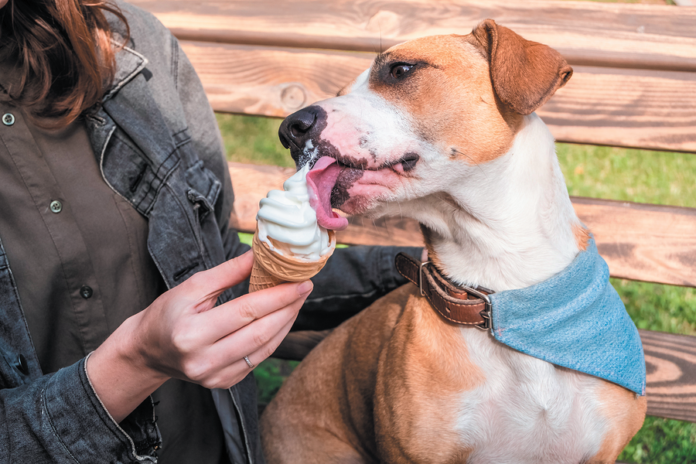People who are diagnosed with diabetes are automatically advised to limit and carefully count their carbohydrates — not just those from the sugar in sweets and fruits but also from starchy foods. That helps keep the sugar in their blood on an even keel. It’s different for diabetic dogs.
Diabetes presents the same problems for them. They don’t secrete enough of the hormone insulin to have sugar efficiently removed from the bloodstream, resulting in damage to tissues throughout the body and causing problems ranging from blindness to neurological issues to amputations and organ failure. But treatment in canines doesn’t focus on fewer carbohydrates, which become the blood sugar glucose that ends up doing all the damage when not kept in check.
While it is reasonable to assume that limiting dietary carbohydrates will help lower a dog’s blood sugar, research on canines hasn’t proven it. Fortunately, it’s pretty much a moot point because most dog food doesn’t have the simple carbohydrates we want to avoid most. It has a mix of proteins, fats, fibers, and carbohydrates. The dog foods you’d want to carefully avoid are those that are semi-moist, as they often contain simple carbs in the form of sugar, corn syrup, or honey. To hedge your bets, avoid feeding your diabetic dog foods with those ingredients on the label.
While carbohydrate management hasn’t been shown definitively to be of value in controlling blood sugar in dogs with diabetes—twice-daily insulin shots are the mainstay of treatment for keeping blood sugar in a healthful range—other dietary components have more solid research behind them.
Fiber. Some studies have shown that fiber directly aids in controlling blood sugar. (This is true for people, too.) A type of fiber called insoluble fiber (measured as Crude Fiber on pet food labels) adds bulk to the diet, thereby slowing digestion and absorption of nutrients into the bloodstream. Those nutrients include carbohydrates; the more slowly they are absorbed after eating, the less chance there is for blood sugar levels to spike too high. Talk with your veterinarian about the advisability of buying a high-fiber diet, either by prescription at the doctor’s office or by choosing one from the supermarket or pet supply store. The vet may say to start with one that’s over-the-counter and switch only if you’re having trouble getting your dog’s blood sugar into line. Tufts veterinary nutritionist Deborah Linder, DVM, points out that higher-fiber foods are sometimes lower in calories, so check with your vet to ensure your pet gets enough calories to maintain a healthy body condition.
Note: Dogs who go on higher-fiber diets may need more “bathroom” breaks.
Calories. Oftentimes, people with diabetes who start out overweight and then lose enough of their excess pounds can go off insulin. They have what is called type 2 diabetes. That means their pancreas continues to secrete the hormone insulin, which makes sure sugar is removed from the bloodstream, but not enough of it to keep blood sugar where it should be. Losing the extra pounds makes their bodies less resistant to the effects of insulin, so blood sugar comes down sufficiently.
Dogs, on the other hand, almost always get diabetes that’s akin to type 1
in people. They have more trouble secreting the insulin. That means they’ll have to have insulin shots twice a day for the rest of their lives no matter what. But with them as with us, excess weight (excess body fat, specifically) makes their bodies more resistant to insulin’s effects. Thus, if they lose some weight, the insulin that gets injected works better, and they might even need less of it. That’s all to the good. The more under control diabetes is, the less likely a dog is to go on to suffer the disease’s effects, which could include everything from slow wound healing to pancreatitis.
Note: Underweight can also be an issue, says Dr. Linder, so work with your vet to find a food that has just the right amount of calories for your pet.
Water. In an effort to rid the blood of excess sugar, the sugar spills into the kidneys, pulling water with it and leading to the creation of more urine. That’s how some of the sugar is flushed from the body. Where glucose goes, water follows. But the more a dog urinates, the thirstier she’s going to be. (Increased sugar in the bloodstream also stimulates receptors in the brain to increase thirst.) To avoid dehydration, Dr. Linder says that fresh, clean water should be available at all times to entice your pet to drink enough. Don’t just change the water in your dog’s drinking bowl once every 24 hours.
Note: Tufts veterinary endocrinologist Dr. Orla Mahony points out that once the diabetes is gotten under control, a dog will stop drinking and urinating excessively.
Consistency is key
While it’s important to consider specific dietary components for a dog with diabetes, what’s paramount is making sure to feed your diabetic pet the same food and the same treats at the same time each day. Taking that step will augment the efficacy of her twice-daily insulin shots. The medicine and the consistency in feeding will work together to keep her blood sugar in check and stop the disease from progressing any more quickly than necessary.





